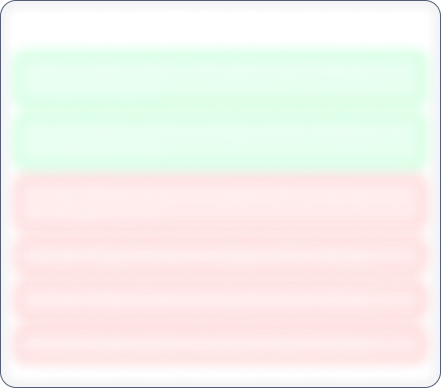Year End Sale 50% off
Acutaas Chemicals

No Data Available
Investor Sentiment
Acutaas Chemicals Share price and Fundamental Analysis
Key Metrics
Included In
Stock Returns
Stock Heatmap

No Stocks
Smart Score

Unlock Smart Score
See Detailed Analysis & Insights


Unlock Insights
See Detailed Analysis & Insights
Technicals
Returns Calculator
If you would have investedResearch Report
No Research Report
Corporate Action
Financials
Key Ratios
ROE
Avg ROE (3 Yrs) : NaN%
ROCE
Avg ROCE (3 Yrs) : NaN%
ROA
Avg ROA (3 Yrs) : NaN%
NPM
Avg NPM (3 Yrs) : NaN%
Dividend History
5 Year FactSheet
Documents

No Data Available
News
Acutaas Chemicals Management and History
Company Management


Unlock Management Data
See Detailed Analysis & Insights
Company History
The Company was initially formed as a partnership firm in the name of 'Ami Organics' with effect from 03 January 2004 at Surat, India. The firm converted into a private limited company under the Companies Act, 1956 under the name of 'Ami Organics Private Limited' with a certificate of incorporation dated 12 June 2007. Subsequently, the Company was converted into a public limited company, following which the Company's name was changed to 'Ami Organics Limited', and a fresh certificate of incorporation was issued by RoC on 18 April 2018. The company is one of the leading research and development (R&D) driven manufacturers of specialty chemicals with varied end usage, focussed towards the development and manufacturing of advanced pharmaceutical intermediates for regulated and generic active pharmaceutical ingredients (APIs) and New Chemical Entities (NCE) and key starting material for agrochemical and fine chemicals, especially from the recent acquisition of the business of Gujarat Organics Limited (GOL). As per the F&S Report, the company is one of the major manufacturers of Pharma Intermediates for certain key APIs, including Dolutegravir, Trazodone, Entacapone, Nintedanib and Rivaroxaban. The Pharma Intermediates which the company manufacture, find application in certain high-growth therapeutic areas including anti-retroviral, antiinflammatory, anti-psychotic, anti-cancer, anti-Parkinson, anti-depressant and anti-coagulant, commanding significant market share both in India and globally. The company's Pharma Intermediates used for manufacturing of APIs and NCEs portfolio has expanded from over 425 products as of 31 March 2019, to over 450 products as of 31 March 2021.
During the FY2021, Bonus shares were issued to the existing shareholders of the Company as on the record date of 31.03.2021 by issue of 2,10,00,000 Equity shares of face value of Rs. 10 each.The Bonus shares were allotted in the ratio of 2:1 i.e Two new equity shares for every one existing shares of the company.
As on 31 March 2021,the company has one joint venture company,namely AMI Onco-Theranostics,LLC.
During the month of September 2021,the company came out with an IPO which comprised a fresh issue of Rs 200 crore and an offer for sale of Rs 370 crore by shareholders,mopped up a total of Rs 570 crore through its public issue.The company will utilise the proceeds from fresh issue and pre-IPO placement for repaying debts and meeting working capital requirements.The allotted shares were listed on the BSE Ltd and National Stock Exchange of India(NSE) on 14 September 2021.
Acutaas Chemicals Share Price
Acutaas Chemicals share price reflects investor sentiment toward the company and is impacted by various factors such as financial performance, market trends, and economic conditions. Share price is an indicator which shows the current value of the company's shares at which buyers or sellers can transact.
Acutaas Chemicals Market Cap
Market capitalization of Acutaas Chemicals indicates the total value of its outstanding shares. Marketcap is calculated by multiplying share price and outstanding shares of the company. It is a helpful metric for assessing the company's size and market Valuation. It also helps investors understand how Acutaas Chemicals is valued compared to its competitors.
Acutaas Chemicals PE Ratio
Acutaas Chemicals PE ratio helps investors understand what is the market value of each stock compared to Acutaas Chemicals 's earnings. A PE ratio higher than the average industry PE could indicate an overvaluation of the stock, whereas a lower PE compared to the average industry PE could indicate an undervaluation.
Acutaas Chemicals PEG Ratio
The PEG ratio of Acutaas Chemicals evaluates its PE ratio in relation to its growth rate. A PEG ratio of 1 indicates a fair value, a PEG ratio of less than 1 indicates undervaluation, and a PEG ratio of more than 1 indicates overvaluation.
Acutaas Chemicals ROE (Return on Equity)
Return on Equity (ROE) measures how effectively Acutaas Chemicals generates profit from shareholders' equity. A higher ROE of more than 20% indicates better financial performance in terms of profitability.
Acutaas Chemicals ROCE (Return on Capital Employed)
Return on Capital Employed (ROCE) evaluates the profitability of Acutaas Chemicals in relation to its capital employed. In simple terms, ROCE provides insight to investors as to how well the company is utilizing the capital deployed. A high ROCE of more than 20% shows that the business is making profitable use of its capital.
Acutaas Chemicals Total Debt
Total debt of Acutaas Chemicals shows how much the company owes to either banks or individual creditors. In simple terms, this is the amount the company has to repay. Total debt can be a very useful metric to show the financial health of the company. Total debt more than equity is considered to be a bad sign.
Acutaas Chemicals Debt to Equity Ratio
The Debt-to-Equity (DE) ratio of Acutaas Chemicals compares its total debt to shareholders' equity. A higher Debt to Equity ratio could indicate higher financial risk, while a lower ratio suggests that the company is managing its debt efficiently.
Acutaas Chemicals CAGR (Compound Annual Growth Rate)
CAGR shows the consistent growth rate of Acutaas Chemicals over a specific period, whether it is over a month, a year, or 10 years. It is a key metric to evaluate the company’s long-term growth potential. Main metrics for which CAGR is calculated are net sales, net profit, operating profit, and stock returns.
Acutaas Chemicals Technical Analysis
Technical analysis of Acutaas Chemicals helps investors get an insight into when they can enter or exit the stock. Key components of Acutaas Chemicals Technical Analysis include:
Support Levels (S1, S2, S3)
There are usually multiple support levels, but the main support levels for a stock are S1, S2, S3. Support levels indicate price points where stock might get support from buyers, helping the stock stop falling and rise.
Resistance Levels (R1, R2, R3)
There are usually multiple resistance levels, but the main resistance levels for a stock are R1, R2, R3. Resistance levels represent price points where Acutaas Chemicals shares often struggle to rise above due to selling pressure.
Acutaas Chemicals Dividends
Dividends refer to the portion of the company’s profits distributed to its shareholders. Dividends are typically paid out in cash and reflect Acutaas Chemicals ’s financial health and profitability.
Acutaas Chemicals Bonus Shares
Bonus shares are usually given by companies to make the stock more affordable, increase liquidity, boost investor confidence, and more.
Acutaas Chemicals Stock Split
Stock split increases the number of its outstanding shares by dividing each existing share into multiple shares. When the company offers a stock split, the face value of the stock reduces in the same proportion as the split ratio.
Acutaas Chemicals Financials
The financials of Acutaas Chemicals provide a complete view to investors about its net sales, net profit, operating profits, expenses, and overall financial health. Investors can analyze financial data to assess the company’s stability and also understand how the company has been growing financially.
Acutaas Chemicals Profit and Loss Statements
The profit and loss statement of Acutaas Chemicals highlights its net sales, net profit, total expenditure, and operating profits in the current financial year. This Profit and Loss statement is crucial for evaluating the profitability and financial stability of Acutaas Chemicals .
Acutaas Chemicals Balance Sheet
The balance sheet presents a snapshot of Acutaas Chemicals ’s assets, liabilities, and equity of shareholders, providing insights into the financials of the company.
Acutaas Chemicals Cashflow Statements
Cashflow statements track the company's cash inflows and outflows over a period. It is an essential tool for understanding how well the company manages its liquidity and finances.


